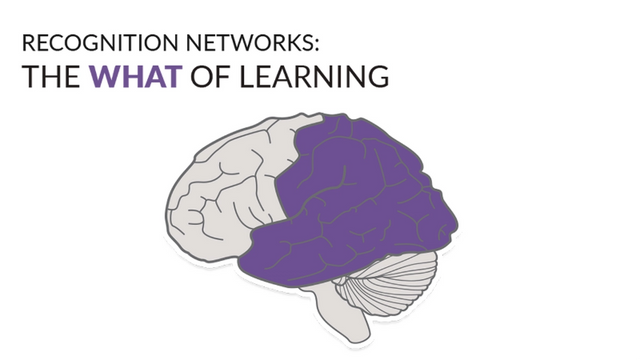The “What” of Learning: Our Brain’s Recognition Networks
The UDL principle of Representation, the “what” of learning, corresponds to the recognition networks that align with our senses. These guide the ways that we comprehend and construct meaning from what is perceived through sound, image, language, symbols, touch, taste, and kinesthetic stimuli including vibration and balance.

Our brain’s recognition networks include more processes than we usually think about. Common thinking about stimuli reception is based on ideas about the functioning of anatomy (eyes, ears, touch, and so on), but the sensory messages processed in the brain are not entirely dependent on anatomy. Here are some basics:
- The basic anatomical reception of light photons or sound waves, or the absence of either of these, differs a great deal amongst us.
- Our senses (hearing, sight, touch, smell, taste, and proprioception) do not operate as independently as we often think, because our sensory cortices communicate with each other using sensory cross talk.
- The recognition networks also message back and forth with other brain regions (such as the affective and strategic networks).
- We now know that while “we are born with a foundation of brain structures. Over time, these structures change based on our experiences and interactions with our environment” (CAST, 2018b).
Given the capacity of our wonderful brains, the neuronal combinations that create our experiences are endless!
However, as educators, we can interfere with that capacity. For example, we can send messages in a particular form that some learners have trouble perceiving and decoding, or we can deliver content that is not portioned or chunked in ways that support learners to make connections within and between concepts in order to build on what they know.
The thoughtful presentation of material can positively impact understanding as well as meet the perceptual needs of a variety of learners. Providing resources, explanations, and linkages between ideas helps students to then navigate and experiment with options for analyzing and applying new knowledge in novel contexts. Scaffolding is an example of this.